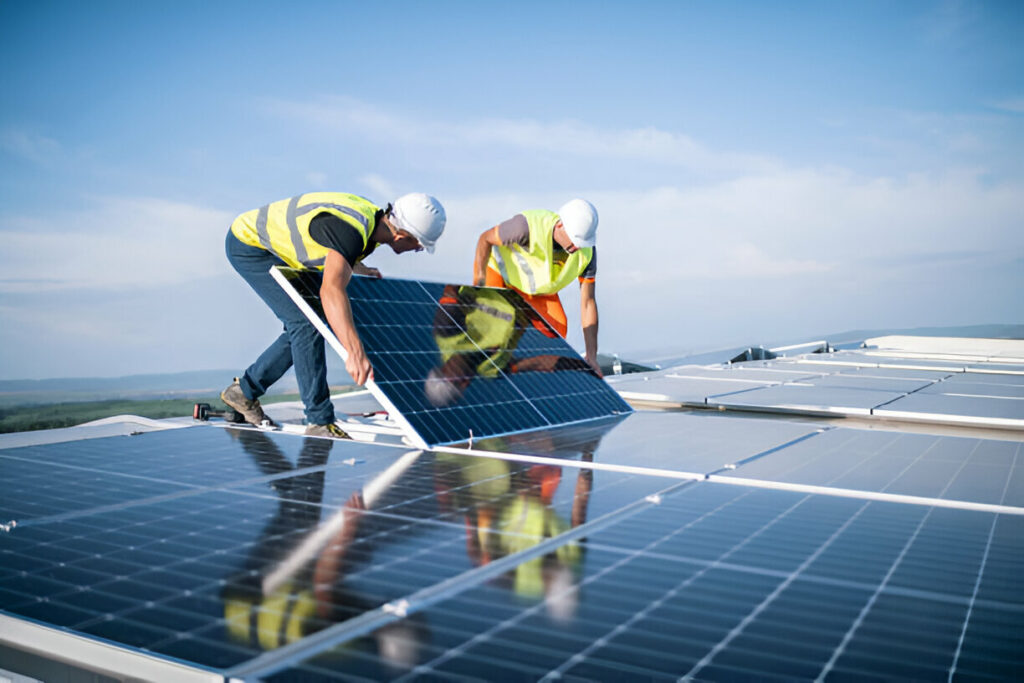As the world turns towards more sustainable energy solutions, solar power has emerged as one of the most popular choices for homeowners. Solar Energy for Homes is not only eco-friendly but also a cost-effective way to reduce electricity bills and increase energy independence. If you’re considering installing solar panels in your home, this comprehensive step-by-step guide will walk you through everything you need to know, from the basics of solar energy to the installation process and maintenance tips.
What is Solar Energy for Homes?
Solar Energy for Homes refers to the use of solar panels to harness energy from the sun and convert it into electricity for your household. Solar panels are made of photovoltaic (PV) cells that absorb sunlight and transform it into usable energy. The electricity generated can power your home, and any excess energy can be stored in batteries or sent back to the grid for credit.
Installing solar energy systems in homes has numerous benefits, including reducing your carbon footprint, cutting down on utility bills, and potentially increasing the value of your property.
Why Choose Solar Energy for Homes?
There are many reasons why homeowners are making the switch to solar energy. Here are a few of the top benefits:
1. Environmental Impact
Solar energy is a clean, renewable energy source. By reducing your reliance on fossil fuels, you are actively reducing greenhouse gas emissions and contributing to a cleaner, healthier planet.
2. Cost Savings
One of the most significant advantages of Solar Energy for Homes is the long-term savings on electricity bills. After the initial installation cost, solar energy can significantly reduce or eliminate your monthly energy bills, providing ongoing financial benefits.
3. Energy Independence
By generating your own electricity, you become less dependent on the grid and utility companies. Solar energy can help protect against rising energy prices, especially if you live in an area with high electricity costs.
4. Increase Property Value
Homes with solar energy systems tend to have higher resale values compared to homes without. Potential buyers see the value in having a sustainable energy solution already in place.
Step-by-Step Guide to Installing Solar Energy for Homes
Now that you understand the benefits of solar energy, let’s break down the process of installing solar panels in your home. This step-by-step guide will help you navigate the process smoothly.
1. Assess Your Home’s Solar Potential
Before installing solar panels, it’s crucial to assess if your home is a good candidate for solar energy. Factors such as the amount of sunlight your roof receives, the size of your roof, and the angle of your roof all play a role in determining the efficiency of a solar panel system.
- Roof Orientation and Pitch: The most effective roofs for solar panel installation face south, with a pitch between 15 and 40 degrees.
- Shading: Ensure that your roof is free from significant shading by trees, buildings, or other obstructions that could block sunlight.
- Roof Condition: The condition of your roof is also important. If your roof needs repair or replacement, it’s best to address this before installing solar panels.
2. Determine the Type of Solar Panel System You Need
There are different types of solar panel systems to choose from, depending on your energy needs and budget.
- Grid-Tied Solar Systems: These systems are connected to the power grid and allow you to use electricity from both solar power and the grid. Excess power generated can be sent back to the grid in exchange for credits.
- Off-Grid Solar Systems: These systems are entirely independent of the grid. They typically require batteries to store excess energy for use during periods when the sun is not shining.
- Hybrid Solar Systems: Hybrid systems combine the best of both worlds. They are connected to the grid but also have battery storage to ensure you have power even when the grid is down.
3. Get Multiple Quotes from Solar Installers
Once you’ve decided on the type of system you want, it’s time to shop around for a reputable solar installer. Getting quotes from multiple installers will help you understand the costs, available options, and installation timelines.
- Check Reviews and References: Look for installers with good reviews and ask for references from previous customers.
- Get a Comprehensive Quote: Ensure the quote includes all costs, including equipment, installation, permits, and any additional services like monitoring or maintenance.
4. Understand the Costs and Financing Options
The cost of Solar Energy for Homes can vary depending on the size of the system and the complexity of the installation. However, there are several financing options available to help homeowners afford solar panels.
- Upfront Payment: Paying for the system outright allows you to avoid interest payments and potentially qualify for tax incentives.
- Solar Loans: Solar loans allow you to finance the installation over time, typically with lower interest rates than traditional loans.
- Leases and Power Purchase Agreements (PPAs): With these options, you can install solar panels with little or no upfront cost. In exchange, you pay a monthly fee or a set price per kilowatt-hour of energy produced.
5. Installation Process
Once you’ve selected a solar installer and finalized the financing, it’s time to install the system. Here’s an overview of the installation process:
- Site Evaluation: The installer will visit your home to evaluate your roof, ensure that it’s suitable for installation, and determine the number of solar panels required.
- Permitting: The installer will apply for the necessary permits to install solar panels. This process can take a few weeks, depending on local regulations.
- Installation: The installation itself typically takes one to three days. The installers will mount the panels, connect them to the inverter, and set up the electrical connections.
- Inspection and Activation: After installation, a local inspector will assess the system to ensure it meets safety standards. Once approved, your system will be activated, and you can start generating solar energy for your home.
Maintaining Your Solar Energy System
Solar energy systems are relatively low-maintenance, but it’s still important to take care of your system to ensure it operates at peak efficiency.
- Regular Cleaning: Solar panels can accumulate dirt, debris, and dust, especially in dry or dusty climates. Cleaning your panels every six months will ensure that they continue to perform efficiently.
- Monitoring: Many solar systems come with monitoring software that allows you to track the performance of your system. This can help you identify any potential issues early on.
- Professional Inspections: It’s a good idea to have a professional inspect your system every few years to ensure everything is working as it should.
How Telemedicine is Benefiting Homeowners During the Installation Process
As technology evolves, Telemedicine has become an innovative solution for homeowners during the installation of solar energy systems. Through telemedicine consultations, homeowners can consult with experts on various aspects of the installation process, from system design to troubleshooting issues.
For example, if you encounter problems with your solar system, you can connect with a technician through a video call to discuss the issue without having to schedule an in-person visit. This can save time and provide quick solutions to minor problems.
Conclusion
Installing Solar Energy for Homes is a smart investment that benefits both your wallet and the environment. By following this step-by-step guide, you can make an informed decision about the type of system that works best for your home and begin the process of switching to clean, renewable energy. Solar power is the future of energy, and now is the perfect time to get started.
For more information on the latest trends in solar technology and installation, check out our Solar Energy Resource Page.
Also read : Solar Energy : 10 Reasons to Switch to Solar Energy Today




